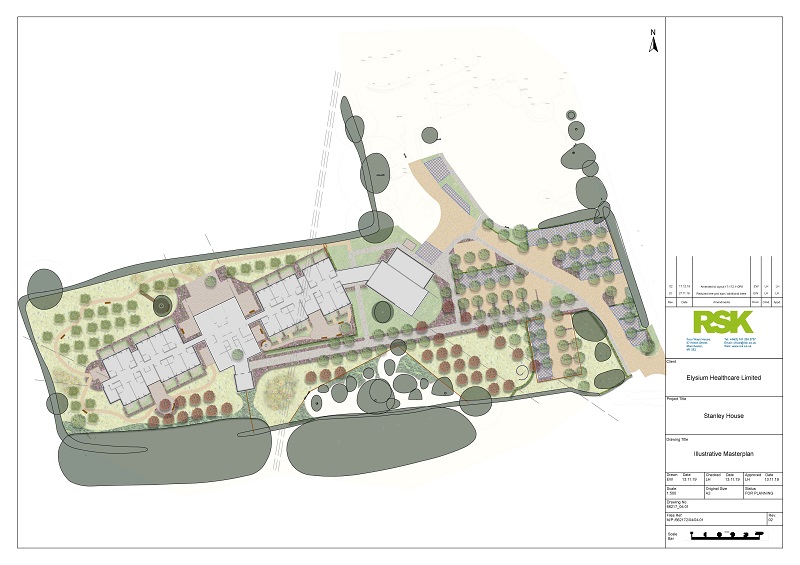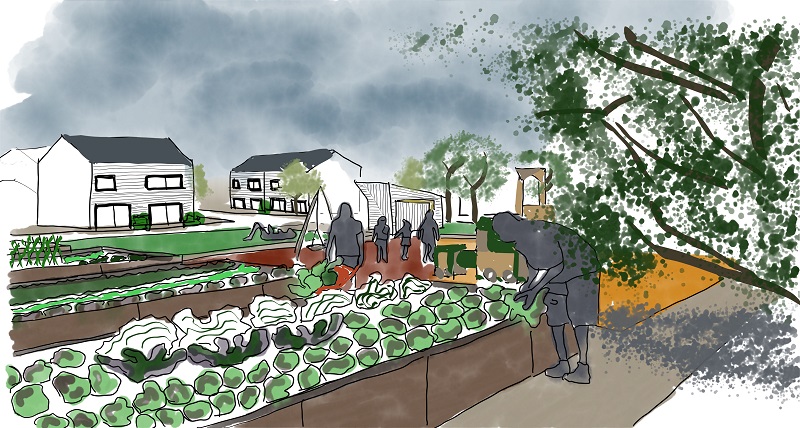 In today’s world, we face challenges that exert pressure on indispensable healthcare systems: an escalating climate crisis, the legacy of a global pandemic, and economic uncertainty are stretching the services and infrastructure of national health and social care across Europe.
In today’s world, we face challenges that exert pressure on indispensable healthcare systems: an escalating climate crisis, the legacy of a global pandemic, and economic uncertainty are stretching the services and infrastructure of national health and social care across Europe.
And, with extreme high temperatures being felt across the continent this summer, the increased pressure caused by environmental conditions is only increasing and, when combined with economic stresses, it is making for difficulties in care provision.
However, regenerative design approaches offer the opportunity to contribute towards the alleviation of the present challenges facing our vital healthcare systems.
The principle of regenerative design places ideas of restoring and replenishing the surrounding natural environment through our built infrastructure at its centre, creating net positives through a circular approach.
This means integrating buildings and infrastructure into existing networks and spaces so they are of benefit to, and accessible by, the community.
The power of nature
In the healthcare context, this is particularly valuable.
A recent study by The Wildlife Trusts in the UK found that ‘green prescribing’ – that is, referring patients to nature-based programmes – could result in an annual cost saving of £635.5m when supporting 1.2 million people, in addition to the mental and physical health benefits of accessing nature to the individual.
The principle of regenerative design places ideas of restoring and replenishing the surrounding natural environment through our built infrastructure at its centre, creating net positives through a circular approach
Creating health and social care environments that give access to green space and nature offers healthier spaces for patients and clinicians by supporting both mental and physical wellbeing.
And the reach is much wider: staff and patients become their guardians, maintaining the environment and further supporting patients’ rehabilitation.
Nurturing this link between the indoors and the outdoors, bringing nature to patients, is exemplified at Stanley House, a specialist facility in neurological complex care located in Herefordshire.
Here, the landscape has been designed to incorporate ‘healing courtyards’ that are directly linked to the individual rooms of the building, connecting outdoors and indoors.
A rich design focus
Local orchards have been reinstated for their cultural and sensory associations, and plants have been installed at different levels to create a unique sensory environment that brings residents back in touch with nature.
The cultural aspect of ecosystems services in contributing to our wellbeing is important, as it relates to a sense of place, connection, and identity, as well as creating a rich design focus for spaces in which to decompress.
Creating health and social care environments that give access to green space and nature offers healthier spaces for patients and clinicians by supporting both mental and physical wellbeing
 The village of Staunton in Gloucestershire is another successful example of developing greater access to nature through cultivating ‘edible landscapes’ that embody therapeutic horticulture principles.
The village of Staunton in Gloucestershire is another successful example of developing greater access to nature through cultivating ‘edible landscapes’ that embody therapeutic horticulture principles.
The village’s community garden, designed to reflect the historic Chartist architecture of the village and to embody the aspirations of the Chartists to live a life on the land, offers a shared central space to be enjoyed by everyone.
The garden is an extension of the village that encourages healthy living through increased access to fresh fruit and vegetables grown by residents and social spaces that can be enjoyed by all.
Staunton’s gardens take a preventative approach to healthcare, supporting health and wellbeing in day-to-day life.
Bringing these spaces to the heart of communities has innumerable benefits.
The regeneration of Green Gates Community Park in Frodsham, Cheshire, emphasises the power of accessible green space, as well as co-design with its users.
The landscape at Stanley House, a specialist facility in neurological complex care located in Herefordshire, has been designed to incorporate ‘healing courtyards’ that are directly linked to the individual rooms of the building, connecting outdoors and indoors
Sustainable communities
Here, the community directly informed the development and rebuilding of its local playground, which ensured it met its needs.
Now open to the public, the park was co-designed to provide learning and play space for children at the same time as being an open space for all residents, incorporating accessible paths for the elderly and wheelchair users, as part of a lifetime neighbourhood design concept, another core tenet of healthy and sustainable communities.
Closing the circle and bringing health and social care considerations back into these wider contexts offers multiple benefits by curating reflective landscapes that are more than ‘just’ restorative.
The important thing is to have a compelling vision and to recognise how the design for a site can contribute to a wider environmental vision or strategy as part of a network of regenerative, nature-based interventions
By embracing regenerative principles, developers can design healthy environments for all and, most importantly, integrate these into the heart of communities, where they are valued most.
Circular and regenerative design approaches ensure the design is right for its context by looking closely at the interconnections that exist in the community and incorporating wider benefits.
Such an approach draws the United Nations Sustainable Development Goals (SDG) and the six capitals of design into projects, creating lifetime neighbourhoods that meet our needs and grow with us into the future, as well as contributing solutions to contemporary environmental and societal challenges.
The challenges faced by this industry are broad but, by recognising the benefits of many smaller-scale interventions, we can achieve strategic benefit.
The village of Staunton in Gloucestershire is another successful example of developing greater access to nature through cultivating ‘edible landscapes’ that embody therapeutic horticulture principles
Greater than the sum of their parts
The important thing here is to have a compelling vision and to recognise how the design for a site can contribute to a wider environmental vision or strategy as part of a network of regenerative, nature-based interventions. This is how we can harness the power of small-scale interventions to add value so they are greater than the sum of their parts.
Designing healthcare settings to sit within natural and community spaces affords us the opportunity to create real, far-reaching resilience
And, to achieve this vision, good design is key.
The simplicity of design – elegant solutions that realise multiple benefits and that work for people – is equally vital.
Whether this is through considering access and flow, creating a design to capture the imagination and delight the senses, or working for a range of different interests and behaviours, we must take an approach that considers the management, sustainable maintenance, and governance of the space from the start.
Such a regenerative, collaborative approach ensures the delivery of resilient healthcare services for the future in line with the wider benefits of sustainable development goals.
This is the bigger picture of modern healthcare – designing healthcare settings to sit within natural and community spaces affords us the opportunity to create real, far-reaching resilience.
